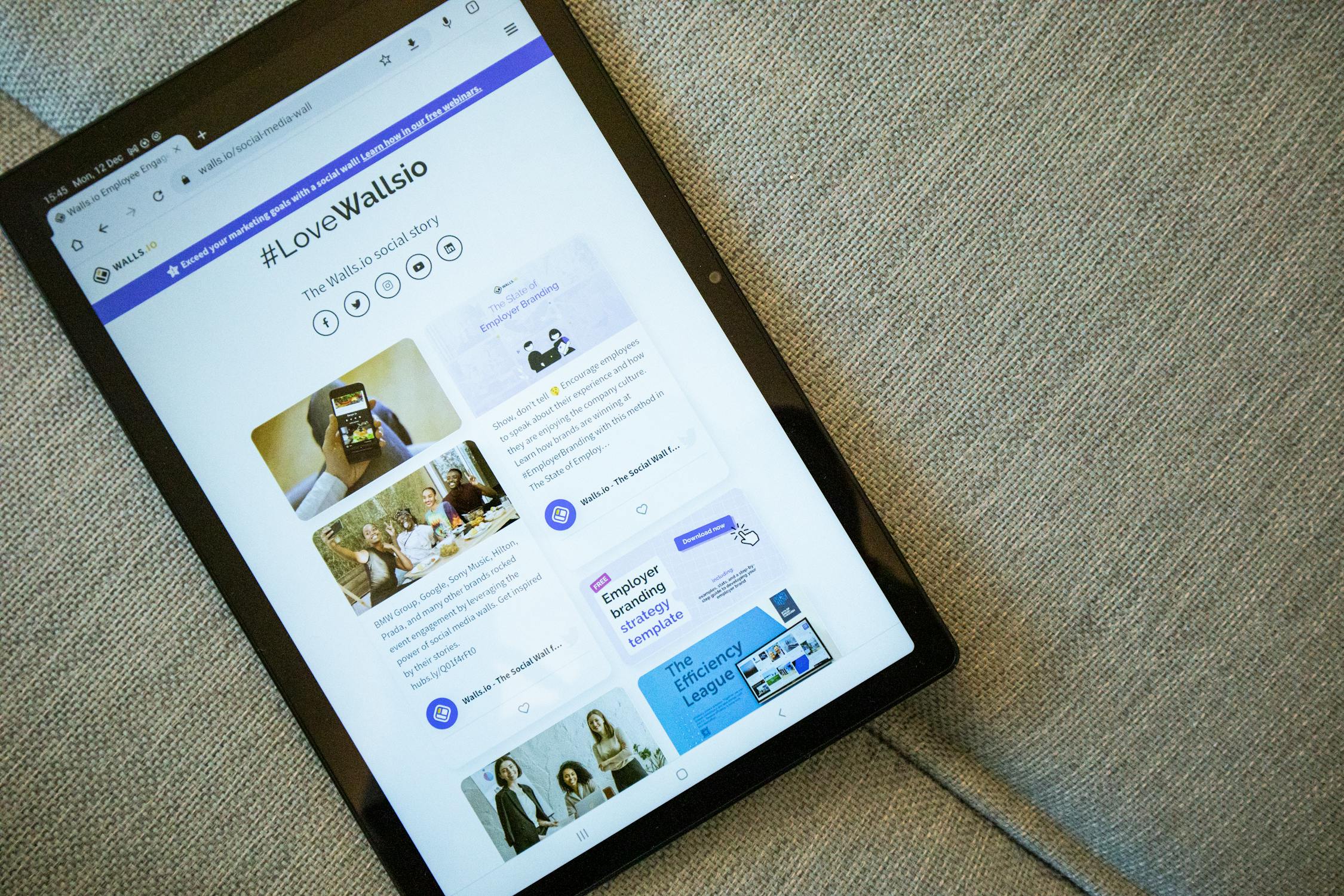Is your website failing to keep visitors engaged? Dynamic content in web design offers a solution. This article explores how dynamic elements can transform user interaction, boosting engagement and retention. We’ll cover key types of dynamic content, implementation best practices, and real-world success stories. By the end, you’ll understand how to effectively use dynamic content to create a more interactive and personalized user experience, ultimately driving better results for your website.
Key Takeaways
- Dynamic content adapts to user interactions, offering personalized experiences and improving engagement
- Interactive elements, user-generated content, and real-time data integration enhance web design effectiveness
- Responsive design and analytics are crucial for implementing dynamic content across devices
- A/B testing helps optimize dynamic elements for maximum user engagement and conversion rates
- AI and emerging technologies are shaping the future of dynamic content in web design
Understanding Dynamic Content in Web Design

Dynamic content in web design adapts to user interactions, offering personalized user experiences. Unlike static content, dynamic elements use JavaScript and other technologies to update in real time. This approach enhances user engagement by delivering tailored information, improving website functionality, and creating a more interactive design that responds to individual preferences and behaviors.
Defining Dynamic Content and Its Importance in Web Design
Dynamic content in web design refers to elements that change based on user interactions, preferences, or other variables. Unlike static content, which remains the same for all users, dynamic content adapts to provide personalized experiences. This approach is crucial for improving user engagement, as it allows websites to display relevant information, such as personalized product recommendations or location-based content, without creating duplicate content across multiple pages. By incorporating dynamic elements on the home page and throughout the site, designers can create a more interactive and tailored experience that aligns with each user’s goals, ultimately leading to higher conversion rates and improved ad performance.
Differentiating Between Static and Dynamic Content
Static content remains unchanged regardless of user interactions, while dynamic content adapts based on factors like user profiles and database information. WordPress and other content management systems enable the creation of dynamic web pages by pulling data from databases and applying tags to customize content. Web servers process these requests in real-time, delivering personalized experiences tailored to each user’s preferences and behavior.
Benefits of Dynamic Content in Enhancing User Engagement

Dynamic content offers significant benefits for user engagement in web design. It improves user experience through personalized interactions, increases retention with relevant content, and drives conversions using targeted offers. By leveraging content management systems (CMS) and digital marketing tools, businesses can reduce bounce rates and comply with data protection regulations while delivering tailored experiences that resonate with their audience.
Improving User Experience Through Personalized Interactions
Personalized interactions significantly enhance user experience, fostering brand loyalty and driving engagement across omnichannel platforms. By leveraging dynamic content on landing pages and throughout the user journey, businesses can tailor their content marketing efforts to individual user behavior. This approach allows websites to adapt in real time, presenting relevant information and offers that resonate with each visitor’s interests and needs, ultimately leading to improved conversion rates and customer satisfaction.
Increasing User Retention With Relevant Content
Dynamic content plays a crucial role in increasing user retention by delivering relevant information tailored to individual preferences. Website builders that incorporate dynamic elements can significantly improve the online shopping experience, leading to a higher return on investment for businesses. By personalizing product recommendations, adjusting content based on browsing history, and offering targeted promotions, web design strategies that leverage dynamic content keep users engaged and encourage repeat visits.
Driving Conversions With Targeted Offers
Dynamic content enables companies to drive conversions through targeted offers, enhancing user engagement and fostering loyalty. By utilizing dynamic search ads and implementing wysiwyg editors for easy content creation, businesses can tailor their copywriting to match individual user preferences. This personalized approach increases the likelihood of conversions by presenting relevant offers at the right time, making the user experience more compelling and effective:
Key Types of Dynamic Content in Web Design

Dynamic content in web design encompasses various types that enhance user engagement. Interactive elements, user-generated content, and real-time data integration are key components. These elements utilize statistics, web browsing history, and web applications to create personalized experiences. Websites can leverage tools like Mailchimp to implement dynamic content strategies, improving relevance and user interaction across different platforms.
Interactive Elements That Boost Engagement
Interactive elements in web design significantly boost user engagement by creating dynamic touchpoints throughout the user journey. Content creation tools enable designers to incorporate HTML forms, quizzes, and interactive infographics that capture user attention and encourage participation. These elements, combined with email marketing campaigns and targeted advertising networks, create a cohesive and personalized experience for users. By integrating interactive content, websites can increase time on page, improve user satisfaction, and gather valuable data for further optimization:
- Interactive product configurators
- Live chat support features
- Gamified elements for user rewards
- Dynamic FAQ sections with expandable answers
- Real-time social media feeds
User-Generated Content and Its Impact
User-generated content (UGC) significantly impacts user engagement and trust in web design. By incorporating UGC elements such as customer reviews, social media posts, and user-submitted photos, websites can leverage the power of authentic experiences to build credibility and foster community. Content management systems enable seamless integration of UGC, while chatbots and customer relationship management tools facilitate user interactions and data collection. This dynamic approach not only enhances the user experience but also provides valuable insights for businesses to improve their products and services:
- Customer reviews and ratings
- User-submitted photos and videos
- Community forums and discussions
- Social media feed integration
- User-generated product ideas or improvements
Real-Time Data Integration for Relevance
Real-time data integration enhances web design relevance by incorporating up-to-date information into dynamic content. Tools like HubSpot enable websites to move beyond static web pages, leveraging personal data and user behavior to create tailored experiences. This approach allows for the implementation of targeted calls to action based on real-time user data, increasing engagement and conversion rates. By integrating live data feeds, businesses can provide users with timely, relevant information that adapts to their needs and preferences:
Best Practices for Implementing Dynamic Content
Implementing dynamic content effectively requires a strategic approach to marketing and user experience. Best practices include ensuring responsive design across devices, utilizing analytics to tailor dynamic elements, and conducting A/B testing for optimal results. These techniques enable businesses to refine their marketing strategy, deliver personalized messages, and enhance the overall user experience through data-driven personalization.
Ensuring Responsive Design for All Devices
Responsive design is crucial when implementing dynamic content to ensure optimal user experience across all devices. Developers can leverage APIs to adapt content dynamically based on screen size and device capabilities. This approach allows consumers to seamlessly interact with dynamic elements, such as shopping carts, regardless of their chosen device. By utilizing PHP and other server-side technologies, websites can process and deliver device-specific data, ensuring that dynamic content remains functional and visually appealing on desktops, tablets, and smartphones alike.
Utilizing Analytics to Tailor Dynamic Elements
Analytics play a crucial role in tailoring dynamic elements for improved customer experience. By analyzing user behavior, businesses can optimize their navigation and display of content on dynamic web pages. Tools like Elementor enable designers to create personalized layouts based on user preferences, enhancing engagement and conversion rates. Through data-driven insights, companies can refine their dynamic content strategy, ensuring that each user receives a tailored experience that aligns with their interests and browsing patterns.
A/B Testing for Optimal User Experience
A/B testing is a vital component of an effective content strategy for website personalization. By comparing different versions of dynamic content, businesses can optimize their web design for maximum user engagement. This approach allows companies to refine their dynamic pricing models and adapt to changing regulations while ensuring the best possible user experience across various web browsers. Through systematic testing, organizations can identify which dynamic elements resonate most with their audience, leading to improved conversion rates and customer satisfaction.
Case Studies of Successful Dynamic Content Implementation
Case studies demonstrate the effectiveness of dynamic content in improving user engagement and customer satisfaction. News websites have enhanced reader engagement by personalizing content based on user preferences and browsing history. E-commerce platforms have achieved success through personalized user journeys, leveraging content management systems and search engine optimization strategies. These examples showcase how dynamic content implementation can significantly impact user experience and business outcomes.
Example of a News Website Enhancing Reader Engagement
A leading news website successfully enhanced reader engagement by implementing dynamic content strategies. The site utilized web template systems to automatically generate personalized article recommendations based on each user’s browsing history and preferences. This technology-driven approach allowed for the seamless integration of relevant images and related stories, keeping readers engaged for longer periods. The automation of content delivery also enabled the website to quickly adapt to breaking news events, ensuring timely updates for its audience. Additionally, the site incorporated a feedback system that allowed users to rate articles, further refining the personalization algorithm and improving overall user satisfaction.
E-Commerce Success Stories Through Personalized User Journeys
Several e-commerce platforms have achieved remarkable success through personalized user journeys powered by dynamic content. These companies leverage advanced software to create tailored experiences based on customer personas, significantly boosting customer engagement and search engine optimization efforts. By analyzing user behavior and preferences, these platforms deliver personalized product recommendations, dynamic pricing, and targeted promotions via HTTP requests. This approach has led to increased conversion rates, higher average order values, and improved customer loyalty across various e-commerce sectors:
- Personalized product recommendations based on browsing history
- Dynamic pricing adjusted to user behavior and market demand
- Tailored email campaigns triggered by specific user actions
- Custom landing pages optimized for individual user segments
- Personalized search results reflecting user preferences
Future Trends in Dynamic Content for Web Design

Dynamic web content continues to evolve, driven by AI advancements and changing user behaviors. Future trends focus on personalized experiences, leveraging data collection for improved customer engagement and lead generation. Emerging technologies will reshape how businesses interact with users, adapting shopping carts and web content to meet individual preferences. These innovations aim to enhance user experiences and drive conversions across digital platforms.
The Role of AI in Shaping Dynamic User Experiences
Artificial intelligence is revolutionizing dynamic user experiences in web design. AI-powered analytics tools now enable content management systems to automatically optimize page layouts based on user behavior and preferences. These systems can analyze vast amounts of information to deliver personalized search ads and tailor content in real-time, enhancing user engagement and conversion rates. As AI technology continues to advance, it will play an increasingly crucial role in creating seamless, intuitive web experiences that adapt to each user’s unique needs and interests.
Predictions for Emerging Technologies and Engagement Strategies
Emerging technologies and engagement strategies are set to transform dynamic content in web design. Regular audits of user interactions will inform AI-driven mobile apps that seamlessly integrate with websites, delivering personalized experiences across platforms. AJAX technology will enable real-time content updates without page reloads, enhancing brand engagement. Newsletters will evolve into interactive, dynamically updated channels, adapting content based on individual user preferences and behaviors:
- AI-powered content personalization
- Cross-platform synchronization of user experiences
- Real-time content updates using AJAX
- Interactive, personalized newsletters
- Predictive user journey mapping
Adapting to Changing User Preferences and Behaviors
Web development trends are shifting towards adaptive content personalization based on changing user preferences and behaviors. Websites now dynamically adjust their content and layout based on factors such as gender, location, and browsing history, using sophisticated URL parameters to deliver tailored experiences. This approach captures user attention more effectively, as content adapts in real-time to match individual interests and needs, resulting in higher engagement and conversion rates across diverse audience segments.
Conclusion
Dynamic content revolutionizes web design by adapting to user interactions and preferences, delivering personalized experiences that significantly enhance engagement and conversion rates. By implementing interactive elements, user-generated content, and real-time data integration, businesses can create tailored journeys that resonate with individual users, fostering loyalty and driving sales. Effective implementation of dynamic content requires responsive design, data-driven analytics, and continuous A/B testing to optimize user experiences across all devices. As AI and emerging technologies continue to shape the future of web design, embracing dynamic content strategies will be crucial for businesses to stay competitive and meet evolving user expectations in the digital landscape.
